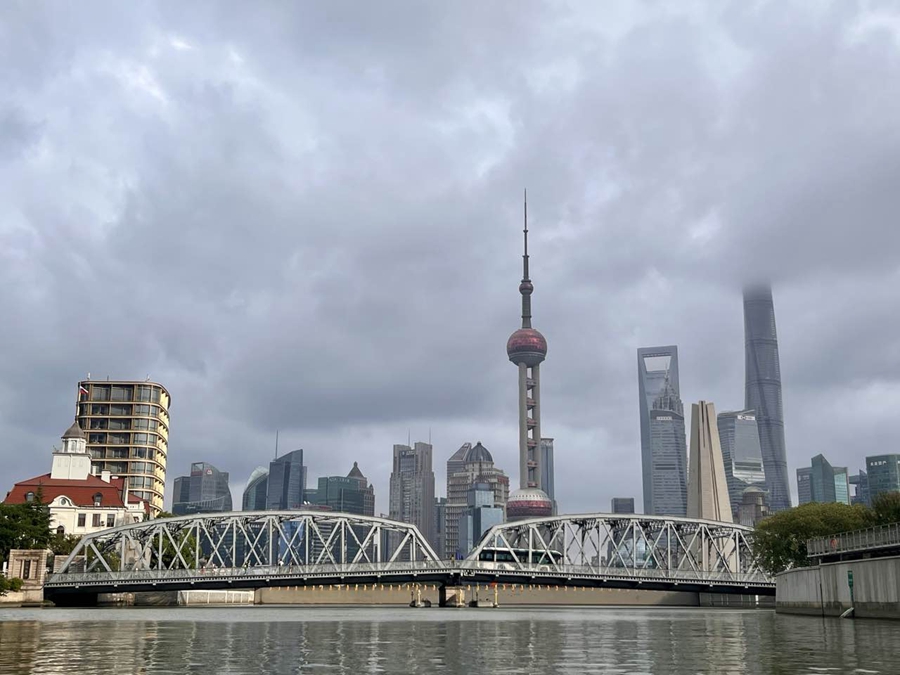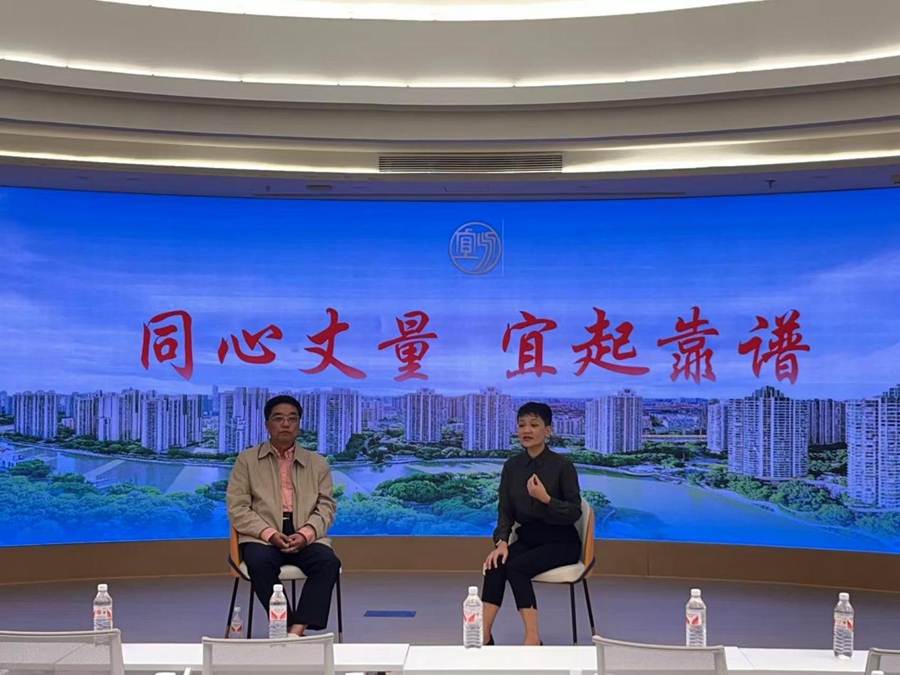
A view of the Lujiazui financial area in Pudong New Area, taken from Suzhou Creek. [Photo by Li Junfeng/english.shanghai.gov.cn]
In recent years, Shanghai has been steadfast in its commitment to transforming itself into a “people’s city”, with a strong focus on developing ecological spaces along the two major rivers.
From picturesque trails along Suzhou Creek to inviting waterfront facilities along the Huangpu River, Shanghai has been actively creating recreational hubs suitable for residents of all ages.
To cultivate new and top-flight urban landmarks, the city’s government has been diligently overhauling institutional mechanisms and policies.
Major projects have been seamlessly integrated into the city’s comprehensive engineering plan—with special attention given to initiatives such as the West Bund Natural Artistic Park and community service centers.
One standout project, the West Bund Natural Artistic Park, has captured attention for its significant impact.
Situated in Huajing town in Xuhui district, this park has been revitalized from the former banks and trading houses lining the Huangpu River waterfront—now spanning an impressive 300,000 square meters.
Embracing a child-friendly design ethos, the park offers a harmonious blend of natural experiences, educational opportunities, entertainment amenities and spaces for enriching parent-child interactions.
According to the Shanghai Landscaping and City Appearance Administrative Bureau, by end-2023, Shanghai had completed and opened 32 similar parks along the Huangpu River and Suzhou Creek.
Looking ahead, the city aims to increase the number to 50 by the end of 2025, encompassing about 105 kilometers of greenways and more than 37 greenway stations.

Community representatives of Brilliant City share stories on how the service center improves the lives of locals. [Photo by Li Junfeng/engligh.shanghai.gov.cn]
Another notable endeavor tied to the environmental enhancement of Suzhou Creek is the newly renovated service center within Brilliant City community in Putuo district.
This bustling residential area, the largest within Shanghai’s inner ring, comprises 96 buildings and nearly 12,000 households. The upgraded service center now caters to a diverse array of resident needs, ranging from medical services and dining outlets to cultural and sports activities, as well as educational facilities.
Moving forwards, plans are for the city to continue its efforts to create a vibrant, sustainable and people-centric environment for residents to enjoy and thrive in.
,https://english.shanghai.gov.cn/en-Latest-WhatsNew/20241030/a5a19d0db15343e0801719f06196fb15.html
